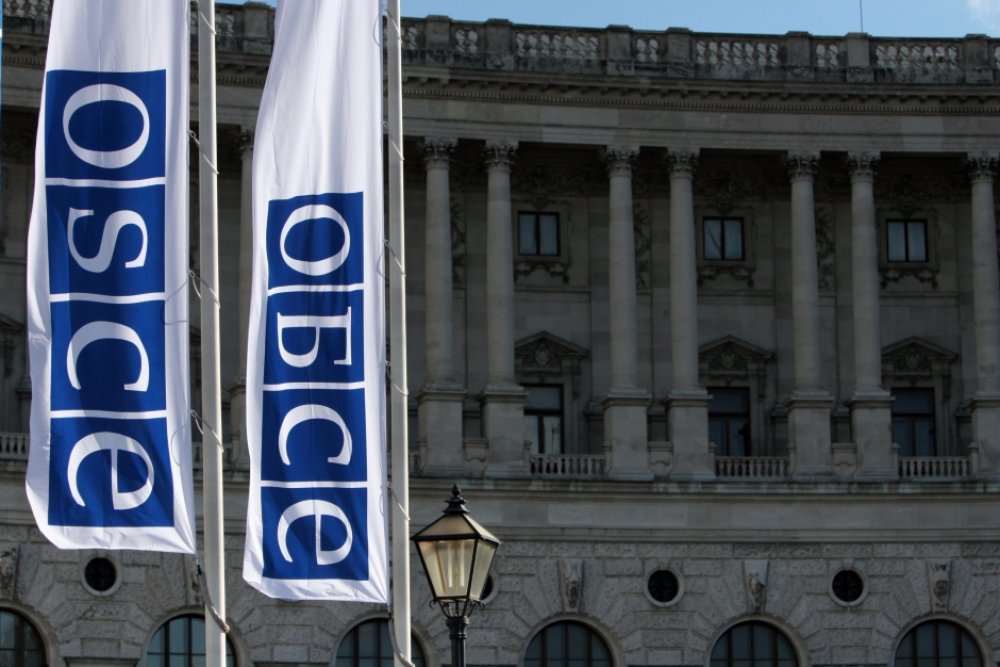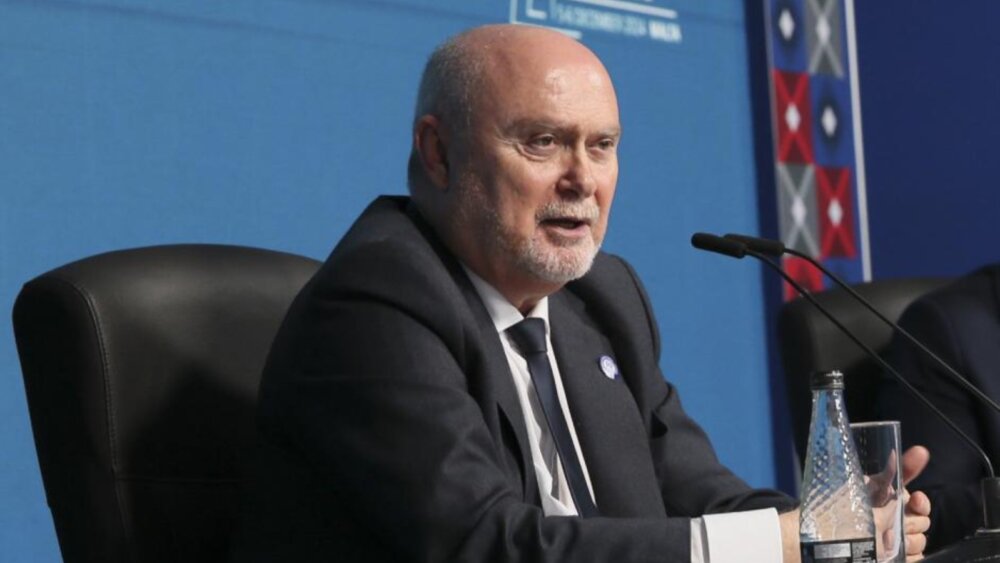rawf8/shutterstock

War in the Caucasus: The Moscow deal, the continuous fighting and the role of the OSCE
What we are witnessing since late September in the Nagorno-Karabakh region is a new full-scale war. It is affecting civilians and soldiers alike on both sides with hundreds of casualties. Nevertheless, it took Russia as a regional stakeholder a long time to summon Azerbaijan and Armenia to Moscow for a high-level crisis meeting. After drawn-out deliberations on 10 October, the rivals finally agreed to a humanitarian ceasefire for the purpose of exchanging prisoners and casualties. Despite a re-confirmation of the truce on 17 October, fighting is still continuing.
In addition to the agreement on a ceasefire, the Moscow deal also confirms that Azerbaijan and Armenia will engage in “substantive talks” based on the OSCE Minsk Group Co-Chairs negotiation process. This reflects Russia’s determination not to open the issue for a new mediation format that was particularly pressed by Turkey. With this decision, the OSCE was given a new lease on life and a renewed importance in its role as mediators for future peace negotiations on Nagorno-Karabakh. The OSCE Minsk Group’s peace mediation mandate also includes the task to prepare the planning of a multinational OSCE peacekeeping force. For this purpose, a High-Level Planning Group (HLPG) was established in 1994 that is made up of a small number of seconded military officers. Unfortunately, its narrow mandate has not been tied to present-day practice of multinational peace missions.
The OSCE Minsk Group with its Co-Chairs is composed of 10 countries that also includes Turkey. As mediation cannot be conducted by committee, this role was confined to the Co-Chairs from Russia, France and the United States (U.S.). Azerbaijan has repeatedly argued that these Co-Chairs are not able to act as impartial mediators, especially regarding France and the U.S., both with large and politically active Armenian diasporas. Furthermore, prior to the Moscow meeting, Azerbaijan proposed that Turkey should join the Co-Chairs of the Minsk Group. Yet, at the Moscow meeting, Russian Foreign Minister Sergey Lavrov did not act upon this proposal. There were, however, speculations that a bilateral Russian-Turkish structured dialogue on Nagorno-Karabakh could emerge.
Also, important to the current OSCE conflict management structure in Nagorno-Karabakh is the Personal Representative of the Chairperson-in-Office, Ambassador Andrzej Kasprzyk. The Personal Representative normally assists the OSCE Chair-in-Office and the Minsk Group Co-Chairs in shaping appropriate conditions for the deployment of an OSCE peacekeeping operation and facilitating a lasting conflict settlement.
Furthermore, the Personal Representative acts as the OSCE’s “eyes and ears” on the ground in the contested territory. Over the last years, he and his small observer team conducted regularly mirror patrols on both sides of the line of contact and the state border where incidences, provocations or fighting proved most likely. In view of the zero-sum relationship between the rivals, there has been virtually no space for further initiatives related to risk reduction measures, even though Ambassador Kasprzyk enjoys remarkably the confidence of the leaderships of both rival countries.
What should be on the agenda of the mediators now in view of the latest escalation of the armed conflict? There are three issue areas to consider:
• Compliance with the ceasefire regime and de-escalation of tensions,
• addressing humanitarian needs and,
• re-engage in substantive negotiations and efforts of reconciliations.
With the continuous violations of the ceasefire that bear grave consequences for the civilian population, calls have been made for establishing a robust ceasefire monitoring mechanism. Russia, seeing itself as a third-party mediator in the region, offered Russian military officers as ceasefire monitors. It is unclear if Azerbaijan would accept Russian military officers as observers in the contested areas. Not to forget that Russia has a mutual defence agreement with Armenia, there is a Russian military base in Armenia, and Russian border guards are stationed at the Armenian border to Turkey.
Alternatively, as prescribed in the mandate for the Minsk Group, the OSCE could set up an OSCE peacekeeping force. The OSCE, however, doesn´t have sufficient track record, capacity nor resources to plan and execute such a mission in the short term. In contrast, as the example of the Special Monitoring Mission (SMM) of the OSCE in Ukraine has shown, it would be possible, should there be a consensus among all OSCE participating States, to rapidly deploy an OSCE civilian multinational observation mission. Such a peace mission could draw extensively from lessons learned of the SMM, in particular regarding the use of ceasefire observation technology (UAVs, satellite imagery, cameras), conducting operations in a potentially active conflict zone, and facilitating humanitarian action.
The Moscow deal also stipulated that “specific parameters of the ceasefire will be agreed subsequently”. Negotiations for a sustainable and lasting ceasefire need to be conducted urgently. This should include agreed measures to reduce tensions and prevent further tit-for-tat retaliations. It should also create benchmarks for disengagements from the line of contact, withdrawal of heavy weapons and addressing the clearing of anti-personnel mines and unexploded ordnance.
The continuous use of armed violence in this region without any end or peace in sight is affecting hundreds of thousands of civilians with indiscriminate targeting of urban areas and the use of cluster ammunition amounting to a violation of the Geneva Conventions. Emergency assistance is difficult as long as armed hostilities continue; humanitarian organizations cannot work safely in affected areas without security guarantees from both sides. With the approaching winter and the COVID-19 pandemic, the humanitarian situation will more than likely be further aggravated.
At the Moscow meeting it was agreed that substantive negotiations will resume, based on the agreed Madrid principles, that should eventually lead to a comprehensive peace process. As the conflict in and around Ukraine has shown over the last years, ongoing violations of a ceasefire agreement do prevent any constructive engagement on “substantive” issues of a peace process.
On 19 October, the three Minsk Co-Chairs will be participating in a closed meeting of the UN Security Council on the conflict over the Nagorno-Karabakh region. In addition to appeals for immediate and unconditional cessation of armed violence there should also be an endorsement of the OSCE Minsk Group as well as calls for establishing a ceasefire monitoring mechanism and urgent humanitarian action. Without the silence of all arms, monitored by impartial observers, ideally in conjunction with an investigative and an accountability mechanism that can assign responsibility when violations occur, there is little chance that stability and peace can ever return to this region.
This article was first published by the International Institute for Peace in Vienna as part of its peace blog series.
Professor Fred Tanner, Ambassador (ret.), a member of the advisory board of the International Institute for Peace in Vienna, currently has a teaching mandate at the Graduate Institute, Geneva (HEID). He also serves on the advisory board of the FES Regional Office for Cooperation and Peace in Europe, Vienna. Seconded by the Swiss government, Fred Tanner has worked for several years at the OSCE, as Senior Adviser for the Secretary General and more recently until August 2020 for the Director of the OSCE Conflict Prevention Centre.



Comments
* Your email address will not be published